Hatsukokoro
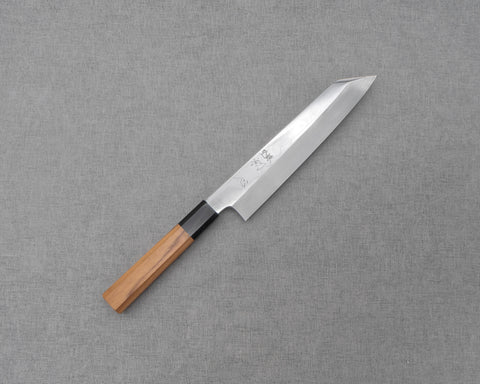
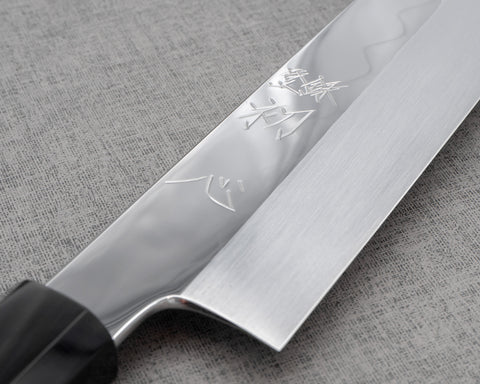
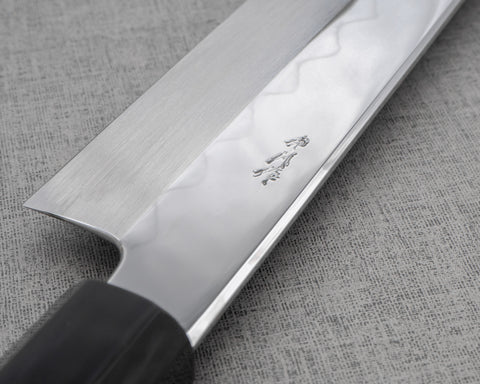
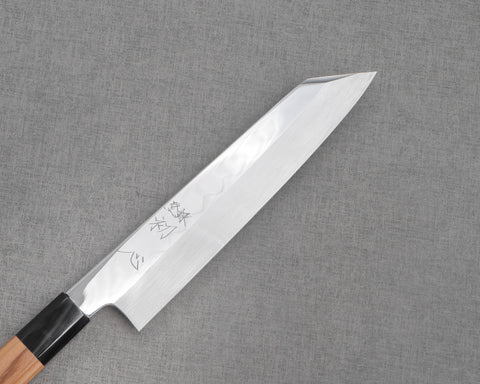
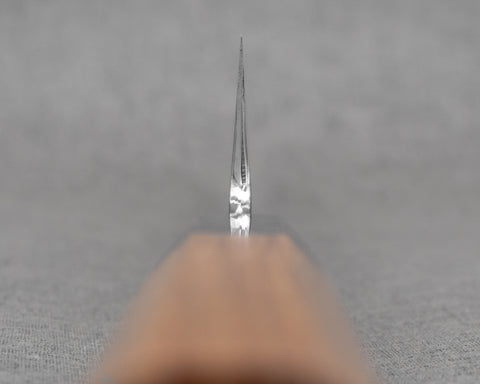
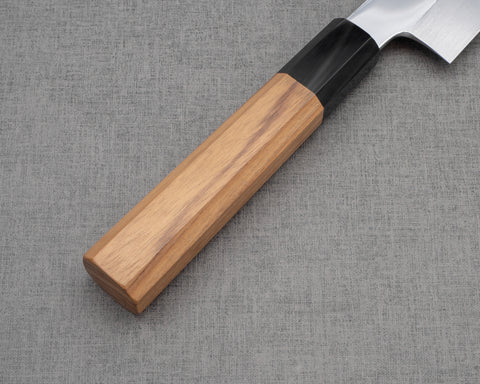
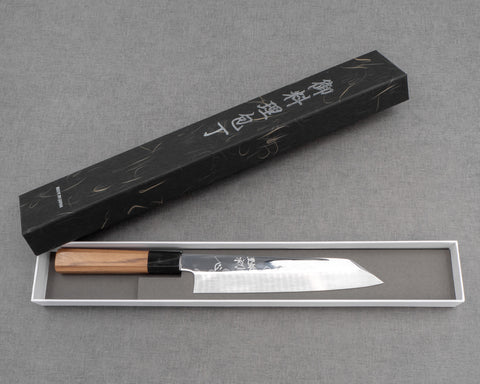
Hatsukokoro / Nakagawa Shirogami #3 Honyaki Mirror Ripple 210mm Kiritsuke Gyuto
目前沒有提供取貨服務
This is so far the highest end model from Hatsukokoro, showcasing the pinnacle of Japanese craftsmanship from Nakagawa Hamono. It features eye-catching full mirror polishing and an elegant ripple finish on the blade. The choil and spine are expertly ground for optimal aesthetics, and the edge is precision-sharpened for flawless laser cutting.
Spec:
- Origin (Made in): Sakai, Osaka Prefecture, Japan
- Brand: Nakagawa Hamono
- Craftsman: Satoshi Nakagawa
- Knife Type: Kiritsuke Gyuto
- Blade
- Construction: Abura-Honyaki
- Grind: Double-edged Blade (50/50 Grind)
- Hagane: Shirogami #3 (White #3)
- Hardness: 60-61 HRC
- Hand-forged, hand-grinded, hand-sharpened
- Blade Finishes:
- Ripple
- So-Kyomen (Full Mirror)
- Blade Length(heel-to-tip): 200mm (7.9")
- Blade Height (at heel): 42mm
- Spine Thickness
- Above heel: 3.2mm
- Middle: 3.1mm
- Handle
- Shape: Hachikaku (Octagonal)
- Material: Teak
- Kuchiwa / Tsukajiri: Black Buffalo Horn
- Length: 133mm
- Overall Length: 348mm
- Weight: 175g (6.17oz)
- Engraved Mark (Front): In Japanese Kanji "Trademark Hatsukokoro" (登録 初心)
- Stamp Mark (Back): In Japanese Kanji "Nakagawa Made" (中川作)
About Nakagawa Hamono 中川打刃物
Satoshi Nakagawa (中川 悟志) is a relatively young knifemaker based in the famous city of Sakai in Japan. 16 years ago, he started learning from legend artisan Kenichi Shiraki (白木 健一), one of the very best blacksmiths in Japan. As master Shiraki retired and closed his workshop in 2020, the torch has been passed down to Satoshi Nakagawa, Shiraki’s only Deshi (disciple). In April 2021, Satoshi Nakagawa-san launched his own workshop Nakagawa Hamono.
About Mizu-Honyaki 水本焼
Mizu-Honyaki is the highest level of Japanese knife making, involving a differential heat treatment achieved by applying clay mud on spine and hira of the blade before heating and water quenching. Very few blacksmiths have the skills of making quality mizu-honyaki, and the failure rate is very high as any tiny crack during the heat treatment forfeits the entire blade. A fine mizu-honyaki is always costly due to the scarcity of blacksmiths and high failure rate.
Care:
Shirogami #3 (white #3) steel is one of the popular types of high carbon steel found in Japanese kitchen knives (Wa Knives). It is not stainless, therefore you must wipe your knife dry after each use. Patina will develop over time. Rust may develop if left in prolonged contact with water or acidic food. Use a rust eraser to clean if rusts develop. Avoid cutting into bones, frozen foods, hard fruit pits.
Cutting Surface:
Recommended cutting surface: wood, rubberized boards and high-end composites, and quality plastics such as polyethene make acceptable cutting surfaces, and will help protect and prolong knife’s edge. AVOID glass, metal, countertops, and other rigid, non-forgiving surfaces.
Sharpening:
We recommend sharpening all quality Japanese knives on whetstones, as we believe they yield the best results for your knives.
